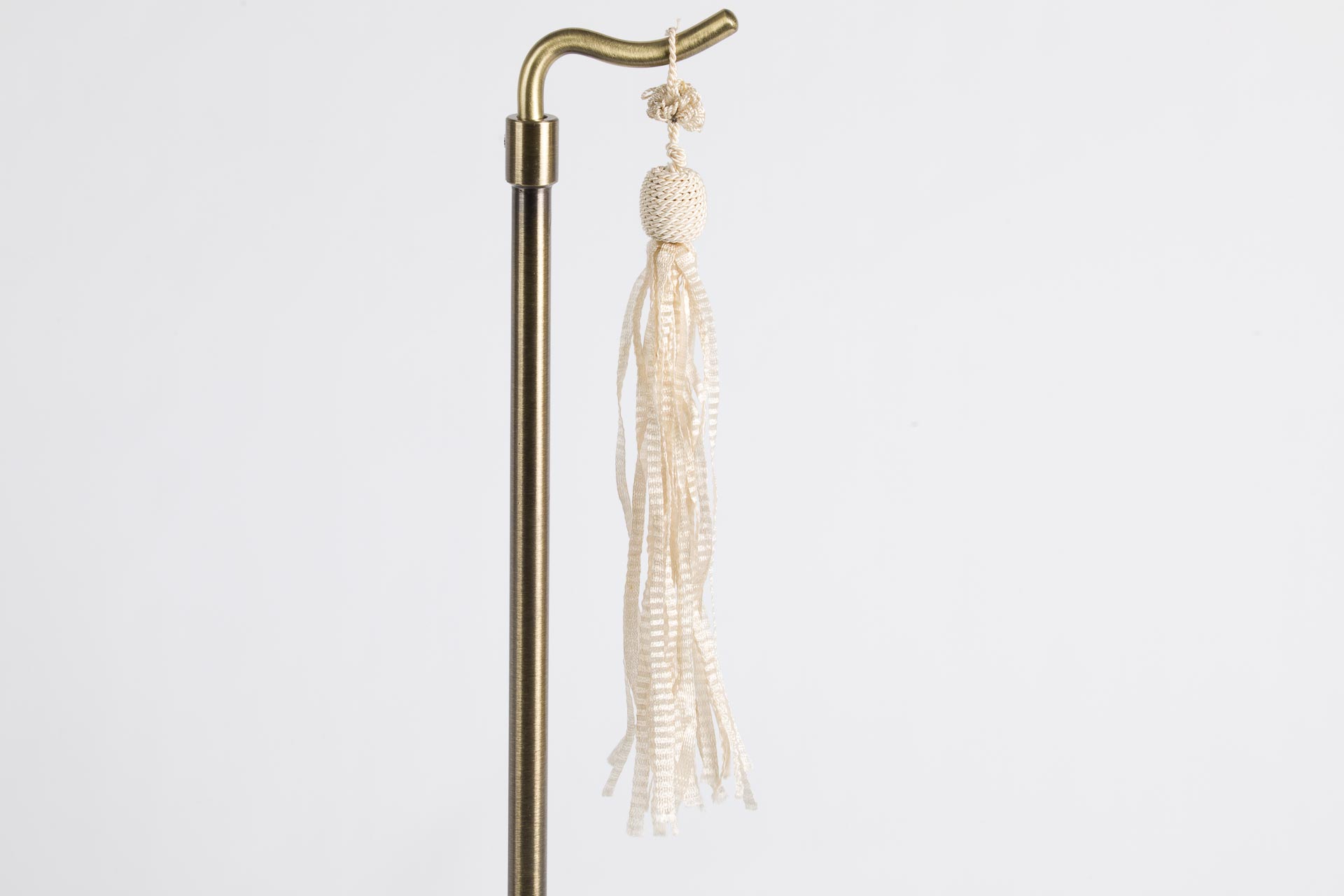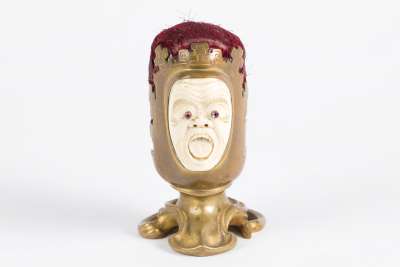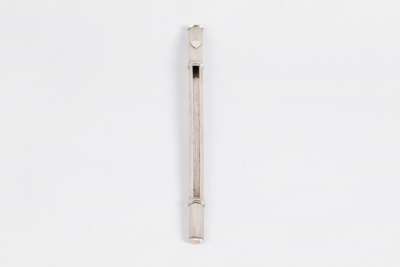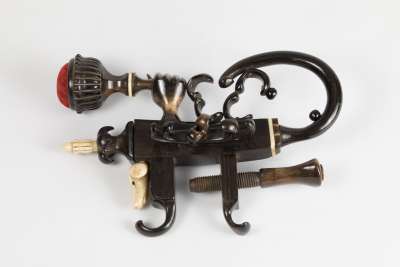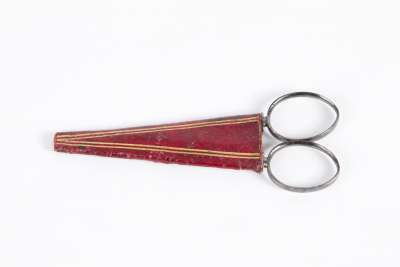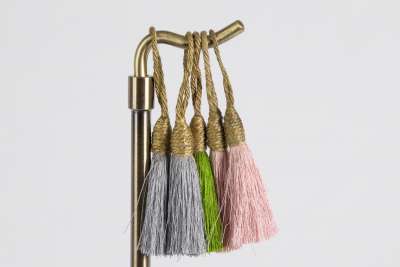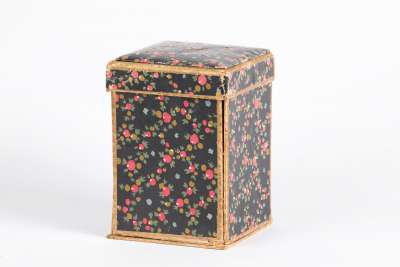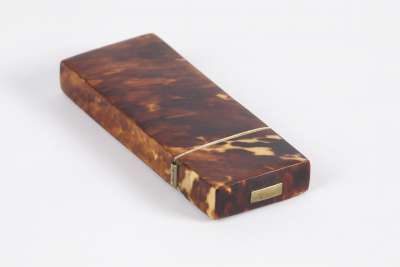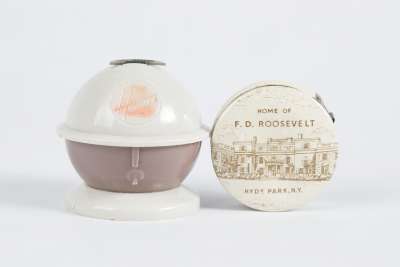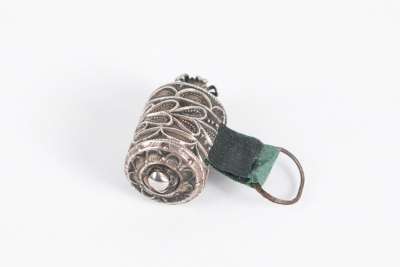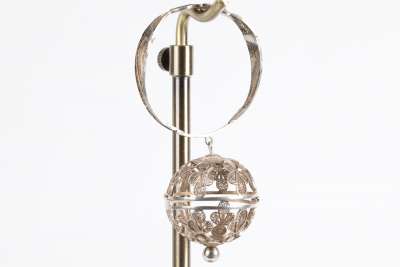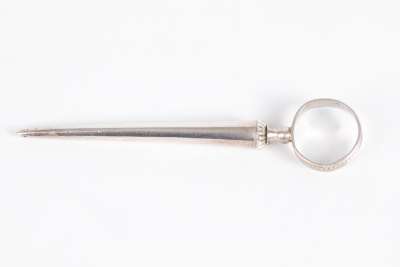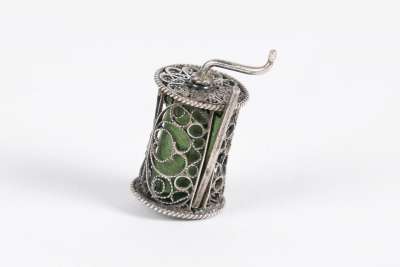Introducing an exquisite piece from the Edwardian era, this cream-coloured tassel, dating from circa 1901 to 1910, captures the refined elegance of early 20th-century design. This tassel features a meticulously woven top, demonstrating the intricate craftsmanship that was prevalent during the Edwardian period. Originating from England, the tassel reflects the understated sophistication characteristic of the era's decorative arts. Its neutral tone and detailed weaving make it a versatile piece, suitable for various decorative applications.
Condition Report
This Edwardian tassel shows wear consistent with its age and use. The cream colour has retained much of its original hue, although there are slight discolourations expected from an item over a century old. The woven top remains intact, showcasing the durability of the craftsmanship despite the passage of time. Minor fraying is visible at the ends, which is typical for textiles of this age, adding to the authenticity and historical value of the piece. Overall, the tassel remains in good condition, preserving its aesthetic and functional integrity.
Dimensions
Weight: 6gm, Length: 22cm, Width: 2cm.
A Decorative Essential
In the Edwardian era, tassels were often used as decorative elements on curtains, upholstery, and clothing, serving both functional and ornamental purposes. This tassel would have been an essential accessory in a well-appointed home, adding a touch of sophistication to interior furnishings. Its elegant design would have complemented the opulent fabrics and intricate patterns that were popular during the period, making it a sought-after embellishment for those aiming to enhance their living spaces with subtle luxury.
Edwardian Elegance in Design
This tassel is a fine example of Edwardian design, which is characterised by its emphasis on lightness and simplicity compared to the preceding Victorian era. The woven top exemplifies the period's focus on craftsmanship and detail, while the cream colour reflects the muted palette favoured during this time. The Edwardian style often incorporated elements of nature and classicism, and this tassel's understated elegance is a testament to these influences. Collectors and enthusiasts of Edwardian décor will appreciate the historical authenticity and design simplicity embodied in this piece.
The Craft of Textile Weaving
The creation of this tassel involved skilled textile weaving, a craft that has been refined over centuries. The woven top showcases the expertise required to create intricate patterns and durable structures using textile fibres. During the Edwardian period, such craftsmanship was highly valued, with artisans dedicating hours to perfecting their techniques. This tassel likely involved the use of a loom, where threads were meticulously arranged to form the decorative pattern visible today. The durability and design of this tassel are a testament to the skilled artisans who crafted it.
Renowned Edwardian Makers
The Edwardian era saw a rise in specialised makers who focused on the production of high-quality decorative items, including tassels. While specific makers of this tassel remain unidentified, it is likely crafted by an artisan skilled in textile arts, reflective of the period's high standards. These makers were known for their attention to detail and ability to produce items that adhered to the tastes and aesthetics of the time. The craftsmanship evident in this tassel aligns with the practices of reputable Edwardian makers, contributing to its desirability among collectors.
Popular with Edwardian Décor Collectors
Collectors of Edwardian décor are often drawn to items that reflect the period's unique blend of elegance and practicality. Tassels, such as this one, are cherished for their ability to enhance interior spaces with subtle historical character. The combination of craftsmanship, design, and historical significance makes this tassel a valuable addition to collections focused on early 20th-century decorative arts. Its preservation over the years allows collectors to appreciate the enduring appeal of Edwardian design, making it a sought-after piece for those passionate about historical interior accessories.
